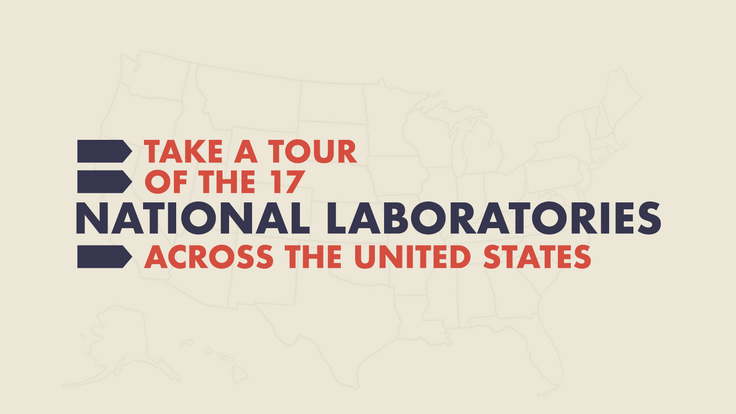This story first appeared in ILC Newsline on November 18, 2010.

Fermilab technician Jim Follkie, under the training of Rongli Geng, performs a nine-cell cavity assembly in the Jefferson Lab clean room. The whole operation is designed to minimise contamination. Image: Rongli Geng
Depending on your household's rules of cleaning, you may have learned about a "right way" to wash dishes: keep dishwater clean for as long as you can, cleaning glasses first, then silverware, then plates. Save the dirtiest wares, pots and pans, for last.
A research team at Jefferson Lab has developed its own detailed set of rules for optimal cleaning. Team members have been working on a regimen for removing imperfections and impurities from superconducting radiofrequency (SRF) niobium cavities. Their procedures, they believe, have helped create cavities that could exceed [International Linear Collider] 2010 performance benchmarks.
The ILC cavity community has achieved a 35-megavolt-per-metre gradient with a 50% probability, or yield, for cavities produced by experienced vendors, using standard cavity preparation techniques at DESY and Jefferson Lab. That's right on target with the ILC R&D 2010 goal, the achievement of which was announced in the 4 November Director's Corner.
“Right now, Jefferson Lab is pretty much doing the best work for production cavities for an accelerator,” said Camille Ginsburg, who is Fermilab's nine-cell SRF cavity coordinator.
The Jefferson Lab team, led by Rongli Geng, recently presented the results, based on very limited statistics, demonstrating achievement of 35 megavolt-per-metre gradient with an even higher yield of 90%. If that figure bears out with further tests, it would demonstrate achievement of the 2012 ILC goal.
Scientists believe that the success is due in part to their precise prescription to rid the cavity of dust, wipe out imperfections on its surface and purge gases that could inhibit conductivity. Their research has resulted in the formulation of a cocktail of voltages, temperatures, pressures and bake times to produce the cleanest possible cavity.
“With this optimisation, you not only increase the yield, you push the gradient,” said Geng. “Our data show that the practical gradient limit for real nine-cell cavities can be pushed to 40 megavolts per metre.” Higher yields and gradients mean lower costs for a linear collider.
The operation begins with a process called electropolishing. A metal rod is carefully inserted into the cavity, whose inner wall is partially immersed in acid. A voltage is applied between the rod and the cavity, prompting the acid to zap bumps in the wall, which could be defects caused by fabrication or parts of a rough surface. The process shaves about a 120-micron layer off the wall, smoothing it.
Geng's team optimised their electropolishing recipe for SRF cavities, originally developed by Siemens. That recipe is carefully developed to polish, but not etch, the inner cavity walls. Scientists determined that the wall temperature near the cavity's equator should be between 30 and 35 °C for a first, bulk electropolish and between 25 and 30 °C for a second, gentler one. They also recommended a voltage of 14.5 volts between the metal rod and the cavity.

Jefferson Lab technician James Davenport carefully inserts a cathode into an ILC nine-cell cavity for the electropolishing process. Successful placement of the cathode requires a steady hand since the cavity aperture is very small. Image: Rongli Geng
The formula appears to be doing the job.
“Electropolishing is the technique that got us up to 35 megavolts per metre,” said Ginsburg.
Following the initial electropolish, the cavity is brushed and wiped down to remove anything that may have been deposited in its nooks and crannies. It's then put through a detergent rinse, another process to clean the hardware, and yet another rinse to remove the particulates introduced by that process.
By this point, it's unlikely any dust will turn up in a white glove test.
The effects of dust and metal bumps can impede a particle's trip down the cavity, but those aren't the only possible culprits. Hydrogen gas, introduced into the cavity wall during the electropolish, weakens the inner layer's conductivity. It has to go, and scientists found that baking the cavity at a temperature above 600 °C chases the gas away.
Actual baking temperatures vary at different labs. For example, 800 °C has been a standard temperature at DESY for some time.
Though hydrogen degassing is not new, previous treatments at Jefferson Lab dictated that the cavity be baked at a lower temperature, 600 °C, for about 10 hours. Not only did that eat up valuable time, it also turned out to be rather incompatible with the metal's particular mechanical properties. By changing the Jefferson Lab baking procedure to 800 °C for two hours, degassing is a snap and leaves cavities more favorable for mechanical adjustments.
“We decided to make this a standard heat treatment for ILC cavity-processing at Jefferson Lab,” said Geng. “At the same time, we're pursuing a better understanding of the relationship between the heat treatment temperature and material properties.”
The Jefferson Lab team was rigorous in linking a cavity-polishing and cavity-cleaning process to a resulting cavity behavior. Incorporating those responses into a feedback loop of data, researchers make changes to details in the cleaning processes — upping the temperature here, lowering the pressure there. Every improvement takes them one step closer to an optimal cavity. They've worked to create an effective, repeatable procedure that others can adopt.
Their research has built on related work in industry and at Cornell University, DESY, Fermilab and KEK.
“I anticipate all this wonderful work will be in industry and in the ILC, and our job is to create an example to show it's possible,” said Geng. “Our final goal is to make this knowledge available not only to sister labs but also to industry.”






